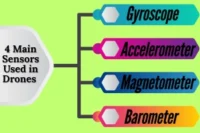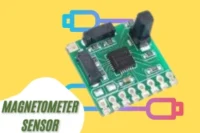Explore Drone Frame Types by Shape, Arms, and Material
Published: 15 Jul 2025
Ever looked at a drone and wondered, “Why do some have four arms while others look like tiny tanks?” It all comes down to drone frame types. There are many options out there—quadcopter, hexacopter, X-frame, H-frame, and more. But how do you know which one suits your needs? Let’s break down these frame types so you can make the right choice.
Frame Types by Arm Configuration
Drone frames come in different shapes and sizes, depending on how many arms and motors they have. This number affects how the drone flies, how much it can carry, and what kind of jobs it can do. Types of drone frames based on arm configuration.
Quadcopter Frames
Most common drone type, especially for beginners and hobbyists.
Offers a good balance between cost, control, and performance.
Simple design makes it easy to build, maintain, and fly.
Quadcopter frames come in different shapes like X -frame and +-frame, depending on how the arms are positioned.
Widely used in consumer drones such as the DJI Mini series for photography and general use.
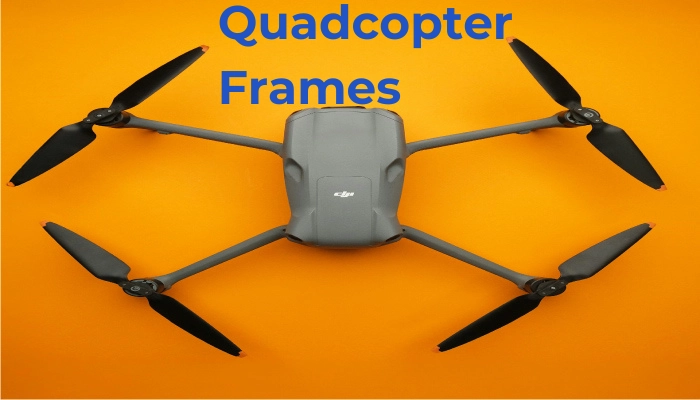
Hexacopter Frames
Comes with six arms and six motors, which gives more power and lift.
Provides better stability than quadcopters, especially in windy conditions.
Can continue flying even if one motor fails, which makes it more reliable for professional work.
Great for carrying medium-weight payloads such as multispectral cameras or spraying systems.
Commonly used in agriculture, land mapping, and environmental monitoring.
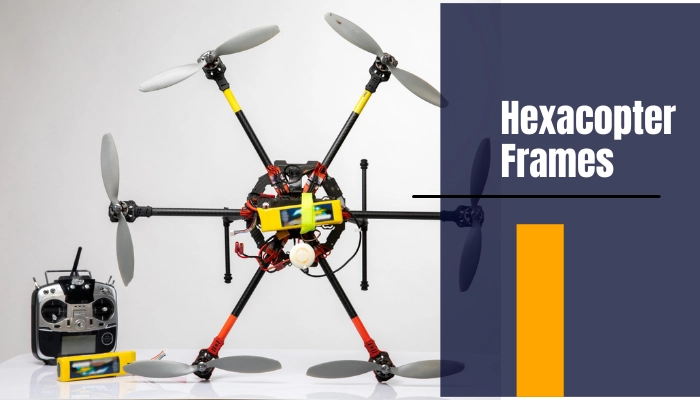
Octocopter Frames
Built for heavy lifting and maximum stability.
It has eight motors, making it perfect for high-end, professional work.
Can still fly safely even if two motors fail, which is useful for critical missions.
However, octocopters are often large, heavy, and expensive.
Frequently used in film production, search and rescue, and industrial inspections.
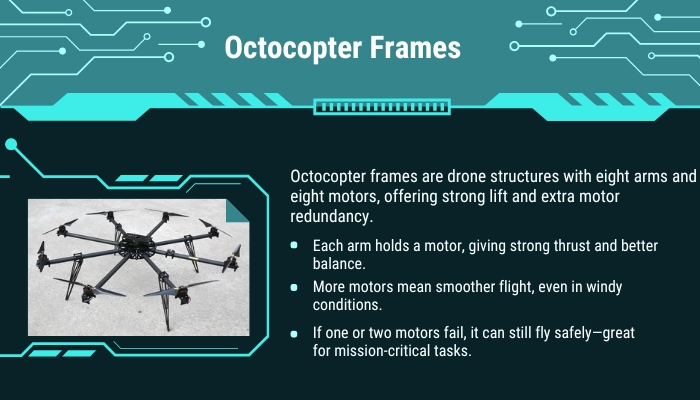
Tricopter Frames
A three-armed drone frame with one motor on each arm.
Lighter and sometimes faster than quadcopters, but less stable.
Needs a tilting motor mechanism for yaw control, which adds some complexity.
Not very common in the market but good for custom builds and learning.
Often used by hobbyists or DIY builders who want a unique and low-cost setup.

Hybrid Configurations
These are special or custom designs that mix different frame features.
Y6 Frame: Three arms, with two motors on each arm—one facing up, one facing down.
X8 Frame: Four arms, also with two motors on each arm.
These frames are used when extra lift and redundancy are needed in a compact size.
Often chosen for aerial delivery, surveillance, or rescue drones.
Used in situations where space is limited but power and stability are critical.
Drone Frame Shapes
The shape of a drone frame affects how it flies, turns, and handles weight. Different shapes serve different purposes—from racing to filming.
X-Frame
This shape looks like an “X” with arms placed at even angels from the center.
It offers perfect balance and symmetry, which improves flight control.
Popular among racing and freestyle pilots because it helps with fast turns and tricks.
The design keeps the center of gravity stable, making the drone responsive and agile.
H-Frame
Shaped like the letter “H,” with a wider body and more room in the middle.
Gives extra space to mount batteries, flight controllers, or cameras.
Great for cinematography, FPV flying with gear, and longer flights.
The wide shape may slightly reduce speed and agility but adds flexibility in setup.
Dead Cat Frame
This frame spreads the front arms wider apart than the back arms.
Helps keep propellers out of the camera view, which is perfect for clean video footage.
Mostly used in aerial photography and video production drones.
Offers good stability while improving the field of view for front-facing cameras.
Stretch X and True X
True X: All arms are evenly spaced, forming a perfect square layout.
Stretch X: The front and back arms are farther apart than the side arms.
Both are used in racing drones for better speed and corner control.
Stretch X allows quicker forward movement, while True X offers equal balance in all directions.
Plus (+) Configuration
A simple frame with one arm pointing in each direction—front, back, left, and right.
Was popular in older drone designs but is less common now.
Easy to build and good for basic training or DIY projects.
Lacks the Controllability and efficiency found in more modern layouts like X-frame.
Drone Frame Materials
The material used in a drone frame plays a big role in how strong, light, and long-lasting the drone will be. Some materials are better for racing. Others are made for carrying heavy gear or withstanding rough use.
Carbon Fiber
Very lightweight and super strong, making it ideal for performance.
Helps improve speed and flight stability, especially in racing drones.
Also used in camera drones because it keeps the drone light while carrying equipment.
Can handle crashes better than plastic.
Slightly more expensive, but worth it for serious pilots or professionals.
Aluminum
A strong and durable metal that can handle tough conditions.
Adds more weight, which makes the drone more stable but less agile.
Often used in industrial drones that carry heavy loads or work in rough environments.
Can take more hits without bending or cracking.
Easier to repair or customize than some other materials.
Plastic / Nylon
Affordable and easy to shape, making it great for beginner-friendly drones.
Used in toy drones, practice builds, or indoor models.
Not as durable as carbon fiber or metal, but good for light use or learning.
Easy to replace parts if they break.
Offers enough strength for short flights and simple tasks.
Mixed Materials
Some drone frames combine plastic, aluminum, and carbon fiber to get the best of each.
Helps balance cost, weight, and toughness depending on what the drone needs to do.
For example, a drone might use a carbon fiber base with plastic guards to protect the propellers.
A smart choice for mid-range drones or custom builds that need flexibility.
Conclusion
Choosing the right drone frame might seem tricky at first, but it gets easier once you know the basics.
Frame Types: Quadcopter, hexacopter, octocopter, and more—each offers a different level of power, lift, and stability.
Frame Shapes: X-frame, H-frame, Dead Cat, and others change how your drone flies and what it can carry.
Materials: Carbon fiber, aluminum, plastic, or a mix—each affects strength, weight, and cost.
The best drone frame depends on what you want your drone to do. Need speed? Go for a racing frame. Need strength? Try aluminum. Just starting? Plastic works fine.If you are building your own drone, don’t be afraid to test different setups. Mix and match shapes and materials to find what works best for your flying style. That’s part of the fun.



